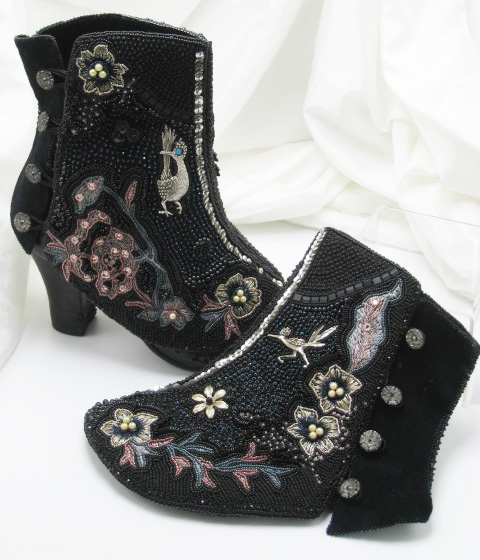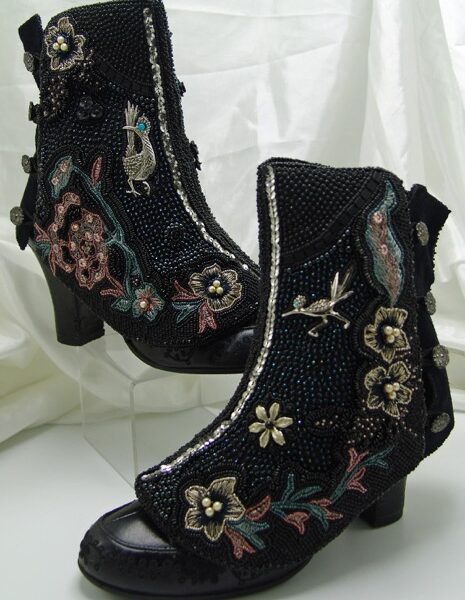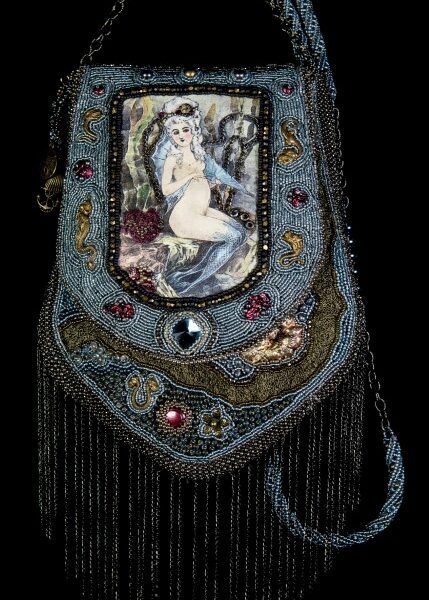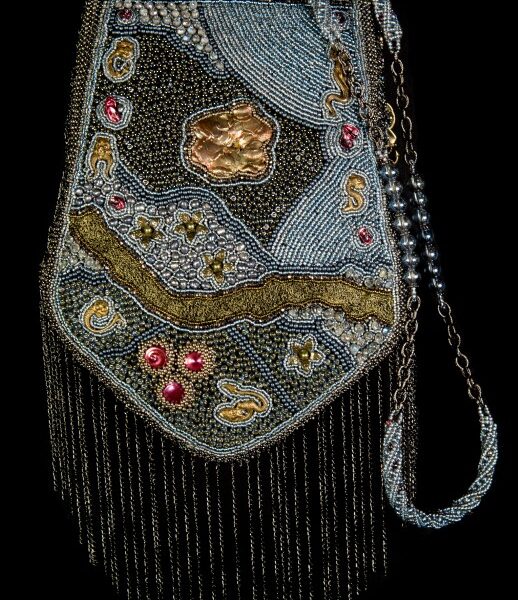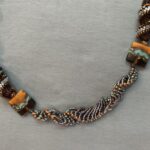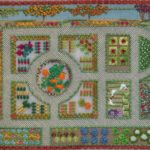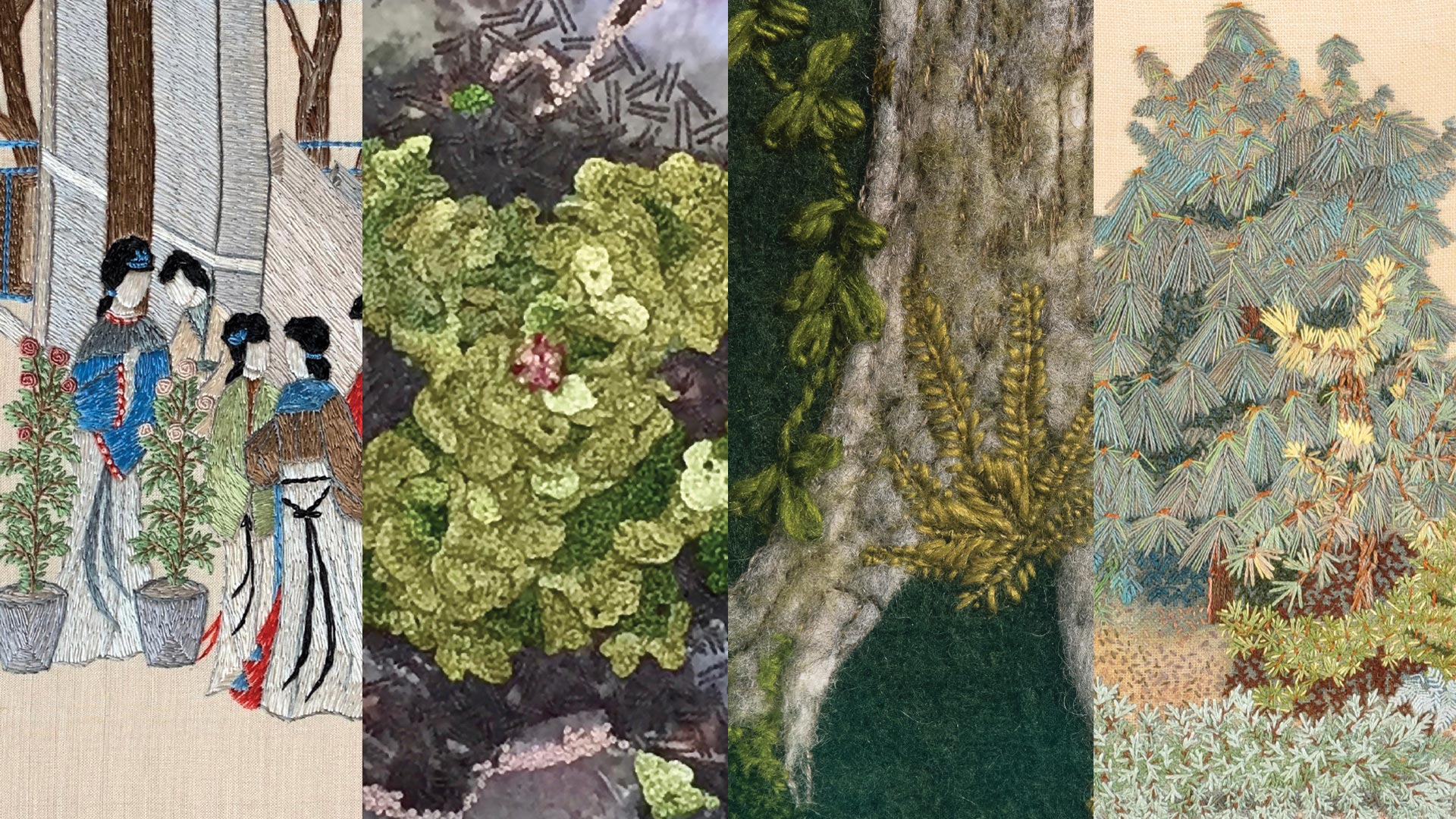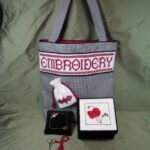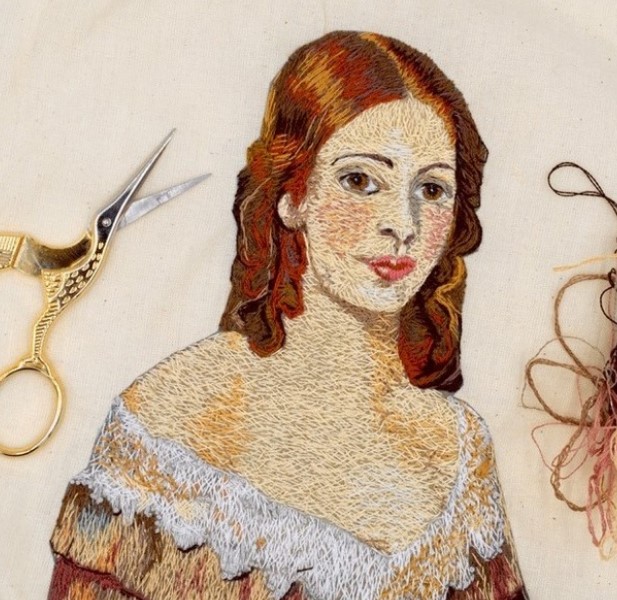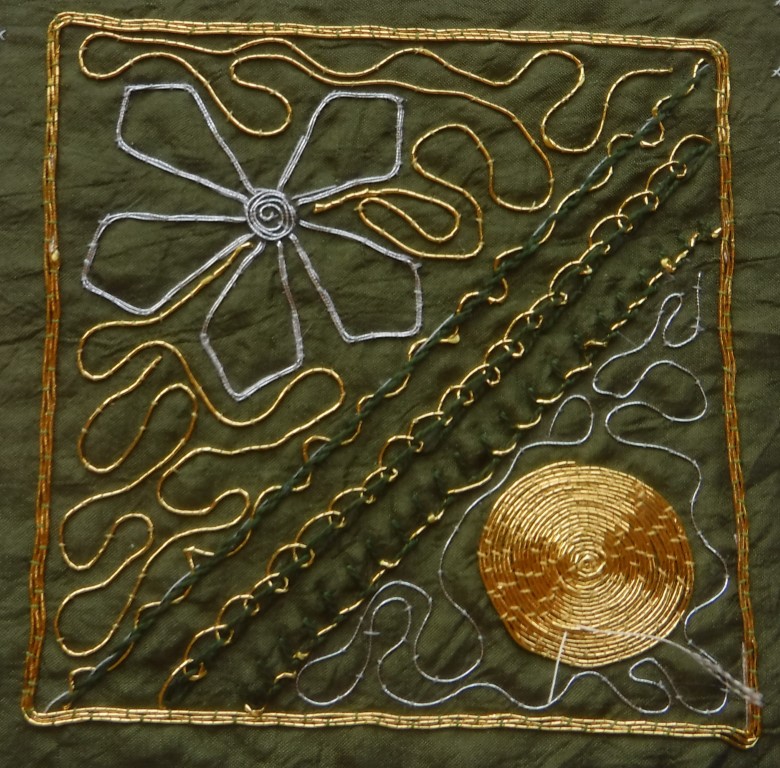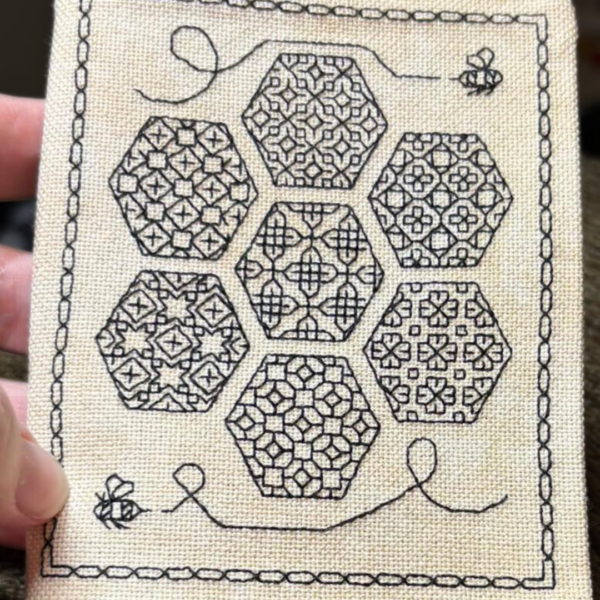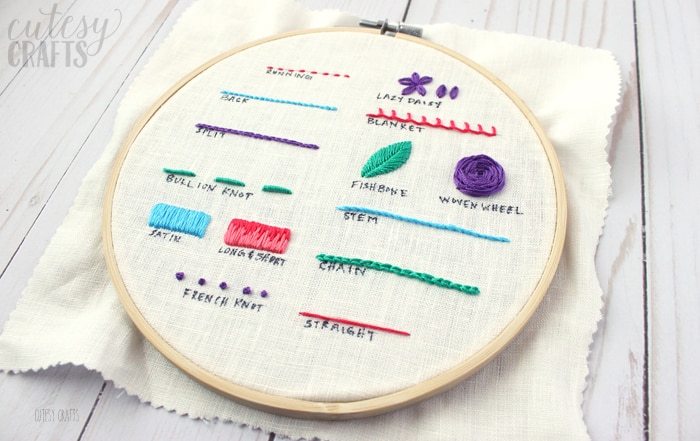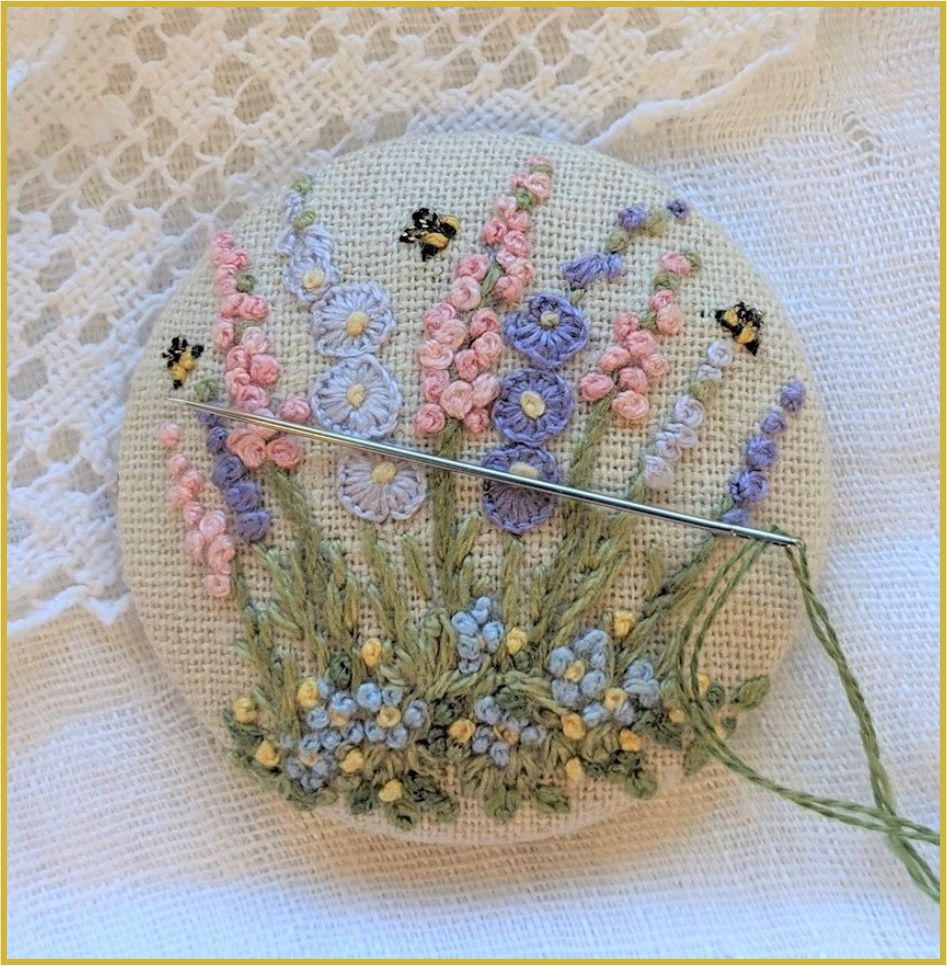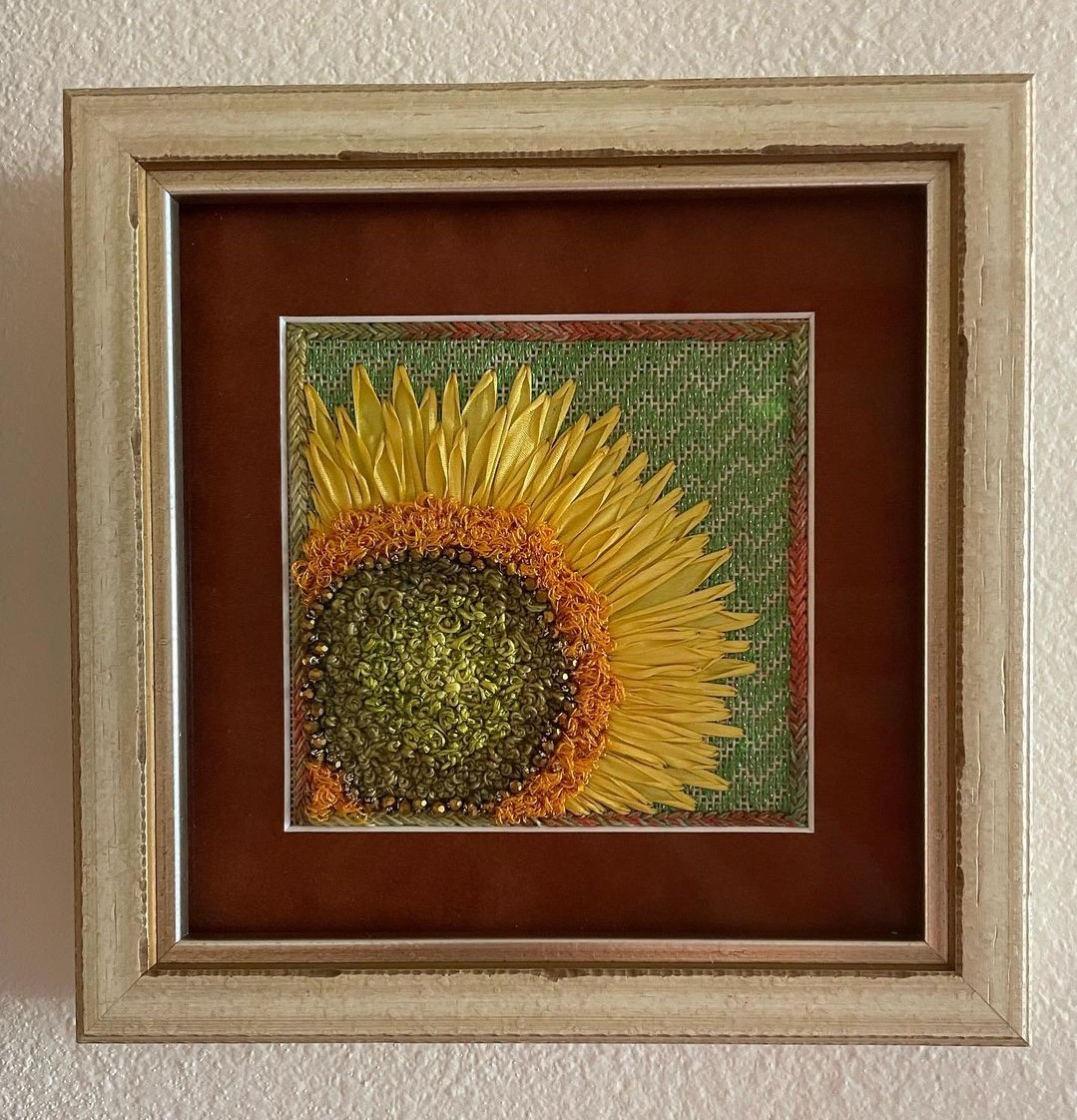With EGA National Seminar 2024 registration nearing its closing date, we decided to shine a light on one of this year’s seminar teachers. Barbara Ellis was an easy choice—her intricately beaded works of art instantly catch the eye and dazzle the senses. Barbara’s history is fascinating, and we loved discovering how a background in interior design opened her eyes to finding inspiration everywhere she looks.
Where did your love of beading and beaded embroidery begin?
I have always been drawn to the arts. When I was a child my grandmother taught me how to knit, then I taught myself how to sew clothing. Later, I went to college and became an interior designer, practiced for over 30 years, but I have always dabbled in the arts, painting, creating etc. My appreciation for beadwork was everywhere, drapery, fabrics, paintings etc. So, one day I went to a bead show, and was mesmerized… I bought books, how-to video tapes, beads, needles, threads, everything I needed to get started. That was over 25 years ago and I’ve been hooked ever since.

Where do you draw inspiration for your designs? Are there particular time periods or cultures that influence your beadwork?
I think because of my interior design education and background, I find inspiration everywhere. Lots of my designs come from periods of time that I’m drawn to, such as Egyptian, Victorian, Art Deco, and Art Nouveau to name a few.
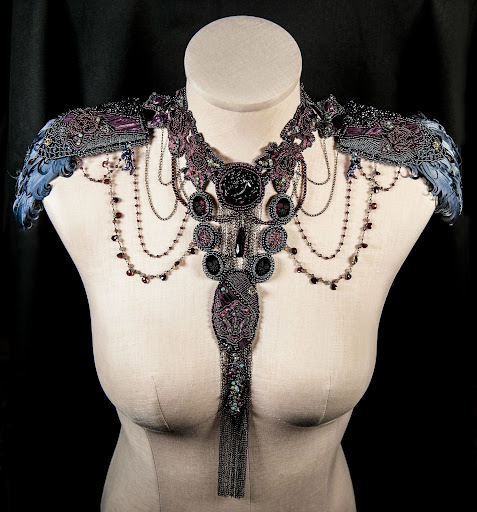
Because I teach locally at the Center for the Arts of Bonita Springs, I submit to their numerous competitions in art where there is always a themed challenge.
When the yearly Bead and Button “Bead Dreams challenge” was current, I was fortunate to be on display with several pieces that are now my personal favorites, such as my Beaded Spats, Or my Midnight Gardens Statement necklace.
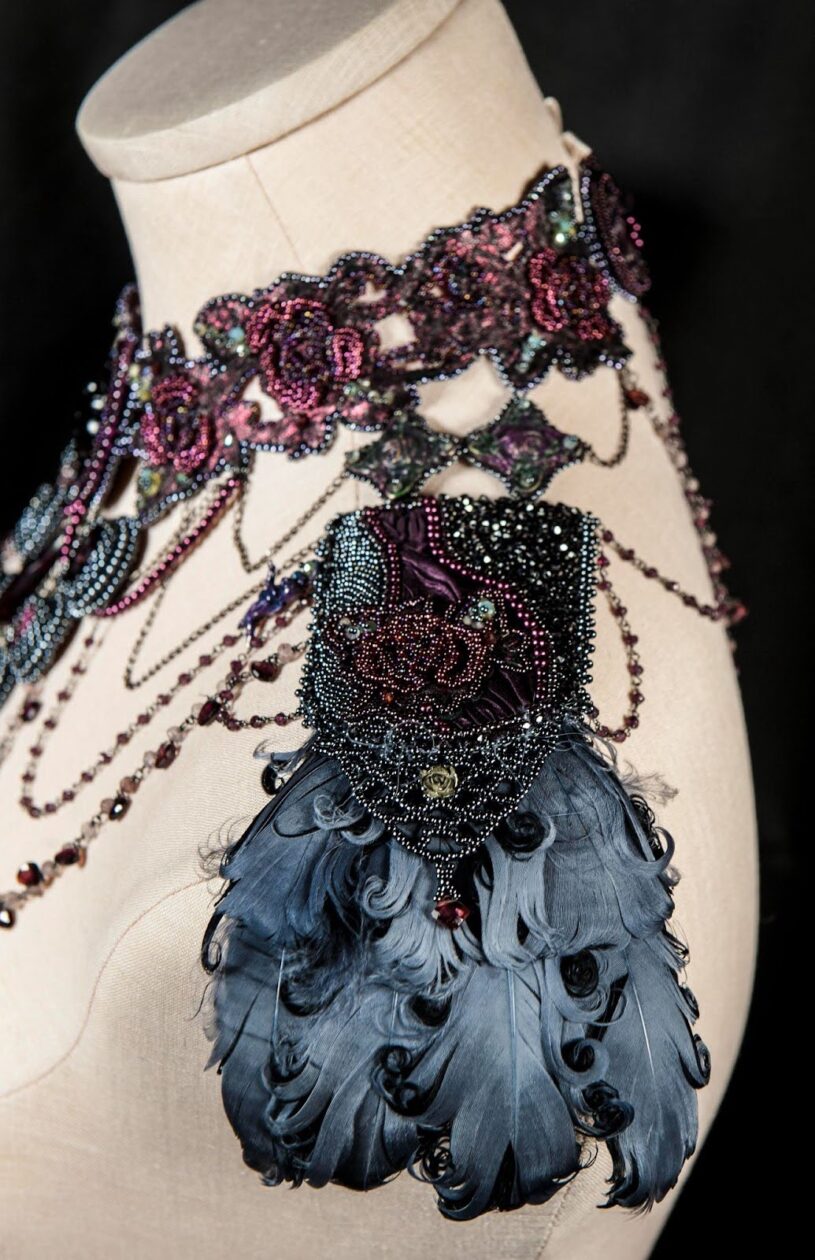
I’ve also participated in several Toho Challenges. They send individual designers a box of their beads and we are asked to create a one-of-a-kind piece, with some guidelines, but the results bring out some incredible original designs.
I have also been on display at the Bead Museum in Maine with my 2nd pair of Beaded Spats; that was through a Bead Competition called “Wings and Stings.” This design was created in bead embroidery and showcased many insects, including my personal favorite, the dragonfly. I don’t know why, but I am drawn to dragonflies and I find myself constantly using them in several of my designs. (Dragonfly cuff, necklace, Raku necklace, spats etc.) I am now finishing step 6 in the EGA Mastercraft program, and have also used some dragonflies in some of the pieces.
I like to think of my jewelry as “Art to Wear.”

How do you approach designing a new piece? What does your design process look like?
Usually I start with the theme or challenge, then I find or create a focal piece. Once those two elements are determined, color becomes the most important element. So many great designs can be made in several or many color schemes. I find that we all have favorite colors and are usually drawn to them. It’s always fun to work outside of the box and try new color schemes, especially when I have a successful design.

Do you have a favorite design that you’ve made?
Yes, I have several, and they are all favorites for different reasons…
Turkish Delight necklace, which I continue to teach, showcases many variations of beaded ropes, almost like a sampler, only in jewelry.
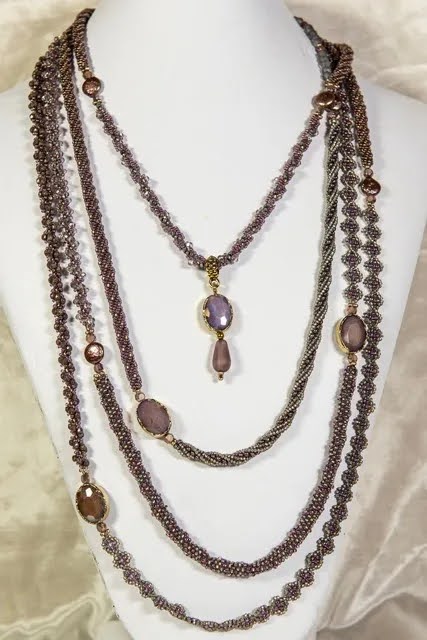
My Beaded Spats, my most creative piece to date, was displayed at “Bead Dreams.” My statement Necklace “Midnight Garden,” was also displayed at “Bead Dreams.” My Mermaid Beaded Purse, featuring a white-haired, Queen of France-like mermaid…
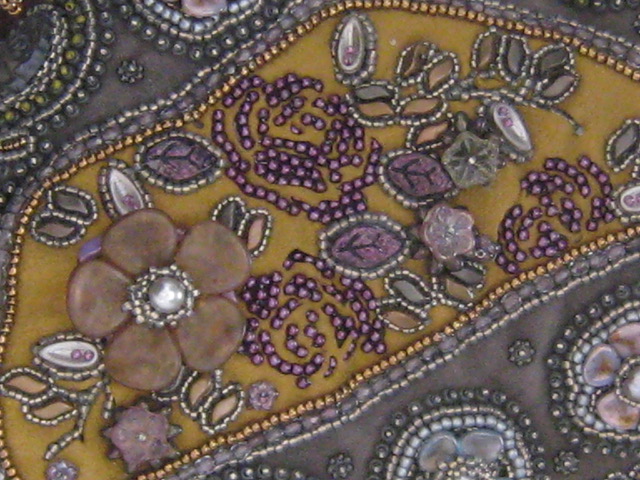
Beads come in all shapes and sizes, textures and colors. When building a beadwork design, what do you consider when choosing which beads will work within the piece?
Color is my first consideration, then the scale, and design. If I want precision and detail I use Delica or Aiko Beads, in size 11/0 and 15/0. The smaller the beads the more detail I can get. I love incorporating some of the newer beads and they keep designing more and more of them every year. That can become a challenge in itself. I also like to incorporate a focal piece, metal findings, ribbons, cording, chain etc. So much to choose from!

You also make your own pendants with clay and other materials. What does that process look like?
I create my Raku Pendants or cabochons to be used as a focal in many of my designs. Sometimes, it’s hard to find the same components, so if I create them I have more control with using them. I usually start with a special clay, and use molds or shape cutters, fire them in a kiln, glaze them, then fire again in a special kiln for Raku pieces. Each piece becomes a one of a kind; because of the process, no two can ever be an exact duplication.
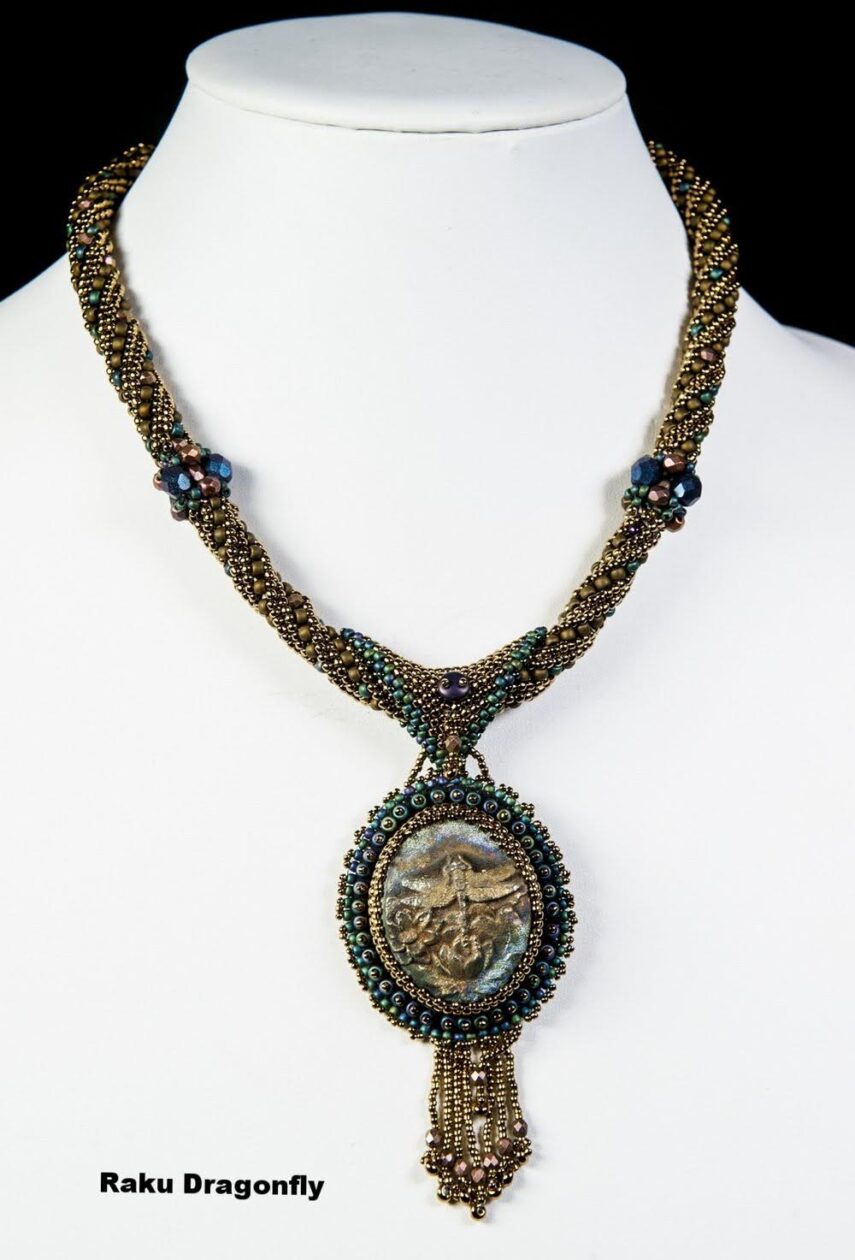
Why is beading your choice of medium?
I love the colors of the beads and the variations: opaque, translucent, matte, metallic, luminous, semi matte, frosted, etc. So much to choose from! It’s like painting, but I can take my time; it’s not rushed, every bead is like a brushstroke, creating beautiful pieces, one bead at a time!
Do you have any favorite techniques?
I like to combine Bead Embroidery with off loom bead weaving stitches in the same piece. A good example is my Enchanted Gardens bracelet, where the main part of the bracelet is bead embroidery but the sides are herringbone stitched, for a more custom fit and textural effect. Or another is My Andromeda Necklace featuring bead embroidered sections that are connected with bead weaving stitches.

What should students interested in learning beading understand about the technique? Any advice for beginners?
I have implemented a class that I teach at my local Art Center called Bead Boot Camp. Students learn all the fundamental stitches first, such as square stitch, brick, peyote, herringbone, right angle weave, etc. With the basic stitches in your repertoire you can achieve anything. The best part about beading is that it is always coming up with new classes, new designs, it promotes originality and creativity!
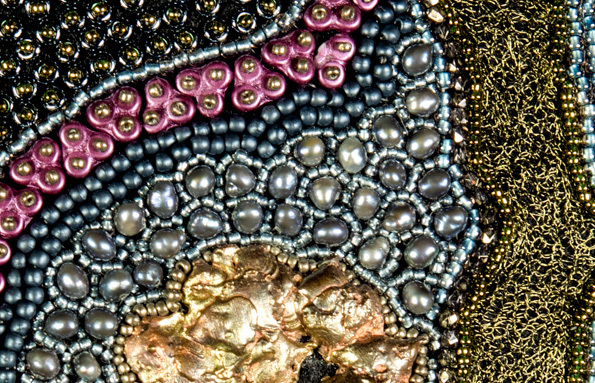
Do you have resources you like for sourcing materials?
The internet is invaluable! So much treasure hunting! I love etsy as a must go-to; you can find anything there!
You’re teaching three classes at EGA National Seminar 2024: 213 Goddess of the Nile (necklace), 113 Cabochon Earrings, and 513 Enchanted Garden (bracelet and cuff). Why did you choose these designs? What can students expect from these classes?
Actually they were chosen from several of my proposals that I offered, but for the first time I love that a necklace, a bracelet. and a pair of earrings were selected. Offering all 3 basic jewelry items. All three are Bead Embroidery with bead weaving elements.
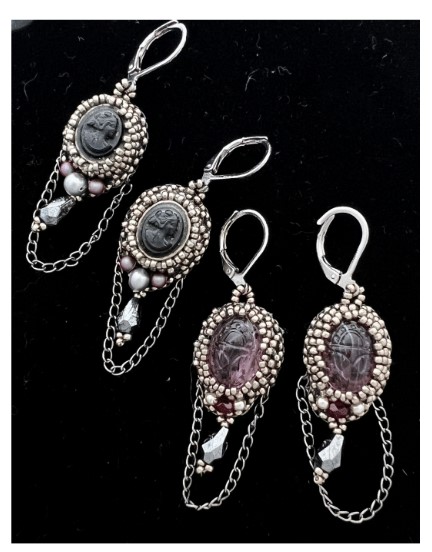
The earrings are a great introduction to bead embroidery and achievable in a one-day class. Students will be able to use the techniques learned in this class for future pieces, not only earrings, but learning how to bezel a cabochon can be applied to other pieces, such as necklaces or bracelets or anywhere you might want to incorporate this.
The bracelet showcases how to create a flower using petal beads and bead weaving techniques. Then it is stitched down to a base created with lace/ultra suede and embellished with accent beads. Bead weaving stitches are used off the bead embroidered main section, for a custom, more fitted effect. It’s much more comfortable to wear with this custom herringbone stitched side piece.
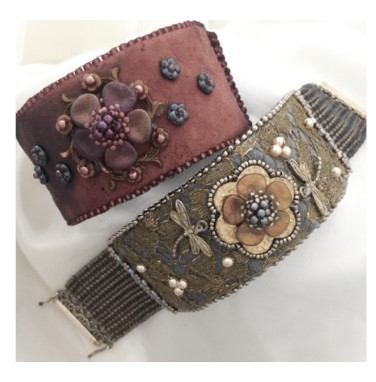
The Egyptian Goddess necklace offers a touch of Egyptian-inspired elegance. Bead embroidery with bezeling is used in the main and smaller cabochons, and separate sections are stitched off of this piece which allows for a more custom fit. The introduction of a newer bead called the pyramid bead is used in the two side pieces. A unique method is used to attach this section and can be used again and again in future pieces.

Thank you to Barbara Ellis for sharing such wonderful insight into her process! Register for EGA National Seminar to take one of Barbara’s classes!
